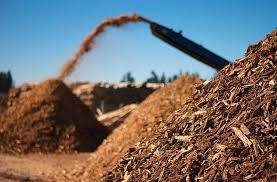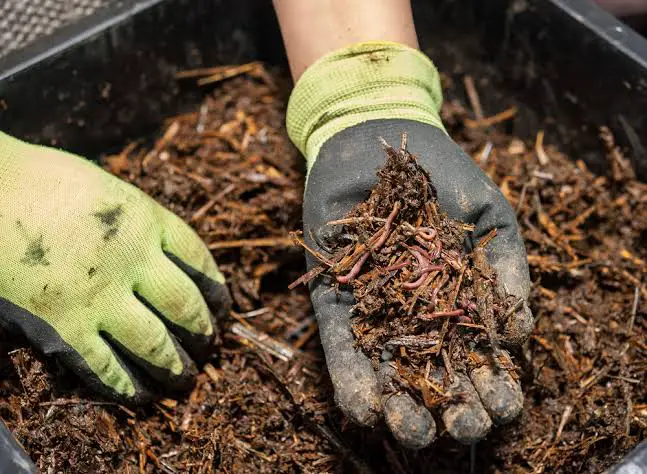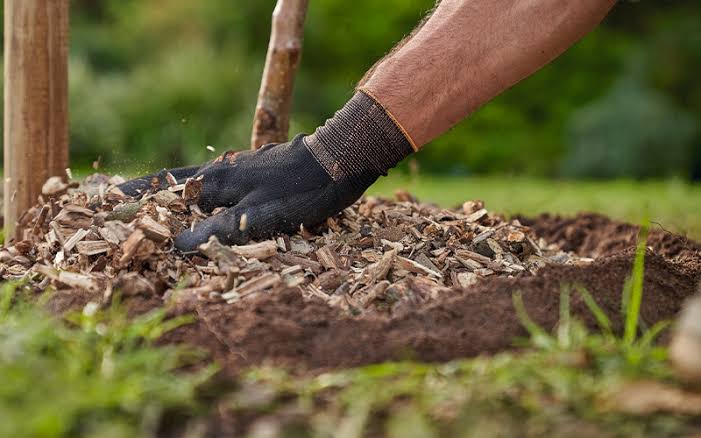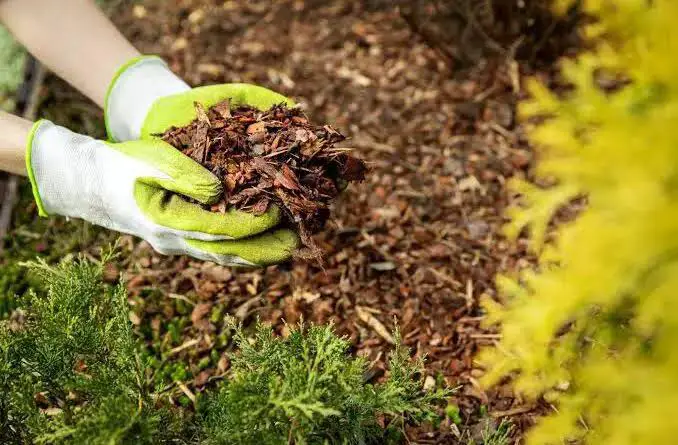Wood wastes can be turned into compost, which is a really good thing. Compost is like food for plants, making them grow big and healthy. Instead of throwing away wood wastes, we can change them into something useful.
When we talk about wood wastes, we mean things like sawdust, wood chips, and even old wooden furniture. These things are often thrown away and end up in landfills, which is not good for the environment. But if we turn them into compost, they can help plants grow and keep our planet cleaner.
To make compost from wood wastes, we need to do a few things. First, we gather the wood wastes together in a pile or a special container. Then, we add other things like food scraps, grass clippings, and leaves. These things help the compost pile to break down faster.
Next, we need to mix everything together and keep it moist. Compost needs water to work properly. If it gets too dry, it won’t break down properly. But if it gets too wet, it can start to smell bad. So, we need to find the right balance.
As the wood wastes and other things break down, they start to turn into compost. This process takes some time, usually a few months. But if we’re patient and take care of the compost pile, we’ll end up with some really good stuff for our plants.
Once the compost is ready, we can use it in our gardens or on our lawns. It’s like giving our plants a special treat that helps them grow strong and healthy. And by using compost made from wood wastes, we’re also helping to reduce waste and take care of the environment.
So, instead of throwing away wood wastes, let’s turn them into compost. It’s good for our plants, good for the environment, and good for us too. Let’s make the world a better place, one compost pile at a time.
Read Also: Waste To Fertilizer: What You Need to Know
Types of Recyclable Wood Wastes and their Uses

Recyclable wood wastes come in different forms and can be used in various ways to benefit both the environment and people. Here are some common types of recyclable wood wastes and their uses:
1. Sawdust:
Uses: Sawdust can be used as a mulch in gardens to help retain moisture and suppress weeds. It can also be mixed with other organic materials to make compost, providing valuable nutrients to plants.
2. Wood Chips:
Uses: Wood chips are often used as mulch around trees and shrubs to prevent weed growth and retain soil moisture. They can also be used in pathways and playgrounds as a natural alternative to gravel or rubber.
3. Scrap Wood:
Uses: Scrap wood can be repurposed for various DIY projects, such as building birdhouses, garden benches, or even small furniture items. It can also be shredded and used as a component in composting.
4. Old Furniture:
Uses: Instead of throwing away old furniture, it can be refurbished or repurposed. For example, wooden chairs or tables can be sanded down and refinished for a fresh look. Additionally, parts of old furniture can be salvaged for use in new projects or crafts.
5. Pallets:
Uses: Wooden pallets can be dismantled and the wood reused for various purposes. Individual boards can be used for shelving, crafting, or even as firewood. Pallets can also be creatively upcycled into furniture or garden structures.
6. Wood Shavings:
Uses: Wood shavings are commonly used as bedding for animals, such as horses, poultry, and small pets. They provide comfortable bedding while also absorbing moisture and odors. Additionally, wood shavings can be mixed with other organic materials for composting.
7. Lumber Offcuts:
Uses: Offcuts from lumber can be utilized for smaller woodworking projects or as kindling for fires. They can also be shredded and incorporated into compost to enrich the soil with organic matter.
How to Convert Wood Wastes into Compost

Converting wood wastes into compost is a simple and rewarding process that helps reduce waste and enrich the soil. Here’s how to do it:
1. Gather Your Materials: Collect wood wastes such as sawdust, wood chips, scrap wood, and other untreated wood materials. You’ll also need other organic materials like food scraps, grass clippings, and leaves to balance the compost pile.
2. Choose a Location: Select a suitable location for your compost pile or bin. It should be well-drained and preferably in a shaded area to prevent the compost from drying out too quickly.
3. Build Your Compost Pile: Start by layering your wood wastes with other organic materials like food scraps, grass clippings, and leaves. Aim for a balance of carbon-rich (wood wastes) and nitrogen-rich (food scraps, grass clippings) materials to promote decomposition.
4. Moisture Management: Keep your compost pile moist, but not soggy. Water the pile periodically to maintain a consistency similar to a damp sponge. Dry wood wastes may take longer to break down, so ensure they are adequately moistened.
5. Turn the Pile: Every few weeks, use a pitchfork or shovel to turn the compost pile. This helps aerate the pile, distribute moisture evenly, and accelerate decomposition. Incorporate fresh wood wastes as needed to maintain the balance of materials.
6. Monitor and Adjust: Keep an eye on your compost pile and make adjustments as needed. If the pile becomes too dry, add water. If it starts to smell bad, it may be too wet or lacking airflow, so adjust the moisture level and turn the pile more frequently.
7. Patience and Time: Composting takes time, typically several months to a year, depending on various factors such as temperature, moisture, and the size of the materials. Be patient and allow nature to work its magic.
8. Harvest Your Compost: Once the wood wastes have broken down into dark, crumbly compost, it’s ready to use in your garden or landscaping projects. Use a screen or mesh to sift out any large debris before applying the compost to ensure a fine texture.
The Benefits of Converting Wood Wastes into Compost
Converting wood wastes into compost offers numerous benefits for both the environment and individuals. Here are some of the key advantages:
1. Waste Reduction: By converting wood wastes into compost, we reduce the amount of organic material sent to landfills, where it would otherwise contribute to methane emissions and take up valuable space.
2. Soil Enrichment: Compost made from wood wastes adds valuable nutrients to the soil, such as nitrogen, phosphorus, and potassium, which are essential for plant growth. It also improves soil structure, water retention, and aeration, creating a healthier growing environment for plants.
3. Sustainable Resource Management: Instead of relying solely on chemical fertilizers, which can be harmful to the environment and costly to produce, composting wood wastes allows us to utilize a natural and renewable resource to nourish plants and enhance soil fertility.
4. Carbon Sequestration: Composting wood wastes helps to sequester carbon in the soil, reducing greenhouse gas emissions and mitigating climate change. By locking carbon into stable organic matter, compost helps to offset the carbon footprint associated with wood waste disposal.
5. Cost Savings: Producing compost from wood wastes can lead to cost savings for gardeners, farmers, and landscapers by reducing the need for commercial fertilizers and soil amendments. It also eliminates disposal costs associated with waste removal and landfill fees.
6. Improved Plant Health and Productivity: Plants grown in soil enriched with compost are healthier, more resilient to pests and diseases, and produce higher yields. Compost provides a steady supply of nutrients to plants, promoting vigorous growth and enhancing overall plant vitality.
7. Biodiversity Support: Healthy soils enriched with compost support diverse communities of beneficial microorganisms, earthworms, and other soil organisms essential for nutrient cycling, soil structure formation, and plant health. This promotes ecosystem resilience and biodiversity.
8. Community Engagement and Education: Composting wood wastes provides an opportunity for community engagement and education about sustainable waste management practices. It encourages individuals to take an active role in reducing waste and caring for the environment while fostering a sense of stewardship and responsibility.
Read Also: A Guide to Waste Management Case Studies
The Uses and Benefits of Recycled Compost

Recycled compost, derived from a variety of organic materials including wood wastes, offers a wide range of uses and benefits for both the environment and society. Here are some of its key uses and advantages:
1. Soil Enrichment: Recycled compost is a nutrient-rich soil amendment that improves soil structure and fertility. It provides essential nutrients such as nitrogen, phosphorus, and potassium, promoting healthy plant growth and maximizing crop yields.
2. Plant Growth and Health: By supplying plants with organic matter and beneficial microorganisms, recycled compost enhances root development, increases drought resistance, and improves overall plant health. It fosters strong, vibrant growth and reduces the need for synthetic fertilizers and pesticides.
3. Erosion Control: Compost can be used to stabilize soil and prevent erosion on slopes, embankments, and construction sites. Its ability to bind soil particles together and improve water infiltration helps to mitigate the effects of erosion and protect vulnerable landscapes.
4. Water Retention and Drainage: The organic matter in recycled compost improves soil water retention and drainage, reducing the risk of waterlogging and runoff. This promotes healthy soil moisture levels, minimizes water wastage, and ensures optimal growing conditions for plants.
5. Carbon Sequestration: Composting organic materials helps to sequester carbon in the soil, mitigating climate change by reducing atmospheric carbon dioxide levels. Recycled compost acts as a long-term carbon sink, storing carbon in stable organic matter and contributing to ecosystem resilience.
6. Waste Diversion: By diverting organic waste from landfills and incinerators, recycled compost helps to reduce greenhouse gas emissions and conserve valuable landfill space. It transforms organic materials into a valuable resource, closing the loop on waste and promoting a circular economy.
7. Soil Remediation: Compost can be used to remediate contaminated soils by immobilizing heavy metals and pollutants, reducing their bioavailability and toxicity. Recycled compost promotes soil health and restoration, revitalizing degraded landscapes and supporting biodiversity.
8. Sustainable Agriculture and Landscaping: Recycled compost is a cornerstone of sustainable agriculture and landscaping practices, providing a natural and renewable source of nutrients and organic matter. It improves soil fertility, reduces chemical inputs, and enhances ecosystem services, fostering resilient and regenerative landscapes.
9. Community and Urban Greening: Compost can be used to establish community gardens, urban green spaces, and rooftop gardens, enhancing urban biodiversity and promoting food security. Recycled compost engages communities in sustainable gardening practices, fosters social connections, and improves quality of life.
Recycled compost offers a multitude of uses and benefits, ranging from soil enrichment and plant health to carbon sequestration and waste diversion. By harnessing the power of composting, we can create healthier soils, greener communities, and a more sustainable future for generations to come.
The Challenges of Converting Wood Wastes into Compost and their Solutions
Converting wood wastes into compost can present certain challenges, but with careful management and attention to detail, these challenges can be overcome. Here are some common challenges and their potential solutions:
1. Slow Decomposition Rate:
Challenge: Wood wastes, especially larger pieces such as branches or logs, can take a long time to break down compared to other organic materials.
Solution: Shred or chip larger wood wastes into smaller pieces to increase surface area and accelerate decomposition. Mix them with nitrogen-rich materials like food scraps or grass clippings to provide the necessary balance of carbon and nitrogen for microbial activity.
2. Lack of Moisture:
Challenge: Wood wastes tend to be dry, which can slow down the composting process if they do not receive enough moisture.
Solution: Regularly water the compost pile to maintain a moist but not soggy consistency. Covering the pile with a tarp or lid can help retain moisture and prevent excessive drying out, especially during hot or dry weather.
3. Imbalance of Carbon and Nitrogen:
Challenge: Wood wastes are high in carbon but low in nitrogen, which can result in a compost pile with an imbalanced carbon-to-nitrogen ratio.
Solution: Mix wood wastes with nitrogen-rich materials such as green plant matter, food scraps, or manure to achieve a balanced ratio of carbon to nitrogen. Turning the compost pile regularly helps to mix and aerate the materials, promoting microbial activity and decomposition.
4. Potential Contamination:
Challenge: Wood treated with chemicals or preservatives, such as pressure-treated lumber, can contaminate the compost with harmful substances.
Solution: Avoid using treated wood or painted wood in composting, as these materials can release toxins into the compost. Stick to untreated, natural wood wastes to ensure the safety and quality of the finished compost.
5. Pest Attraction:
Challenge: Certain types of wood wastes, such as sawdust or wood chips, can attract pests like ants or termites if not managed properly.
Solution: Monitor the compost pile regularly for signs of pest activity and take measures to discourage pests, such as turning the pile frequently to disrupt nesting sites or covering the pile with a layer of soil or finished compost to deter pests from accessing the wood materials.
6. Odor Issues:
Challenge: Wood wastes that are too wet or compacted can create anaerobic conditions in the compost pile, leading to unpleasant odors.
Solution: Ensure proper aeration and drainage by turning the compost pile regularly and incorporating bulky materials like straw or leaves to improve airflow. Avoid overwatering the pile and maintain a balanced moisture level to prevent anaerobic decomposition and odor formation.
By addressing these challenges proactively and implementing appropriate solutions, it is possible to successfully convert wood wastes into high-quality compost while minimizing potential problems and maximizing the environmental benefits of composting.
Frequently Asked Questions (FAQs) About How to Convert Wood Wastes into Compost
1. Q: Can all types of wood wastes be composted?
A: Yes, most types of untreated wood wastes can be composted, including sawdust, wood chips, scrap wood, and wood shavings. However, it’s best to avoid using treated or painted wood, as these materials may contain harmful chemicals.
2. Q: How long does it take to convert wood wastes into compost?
A: The time it takes to convert wood wastes into compost depends on factors such as the size of the materials, moisture levels, and environmental conditions. Generally, it can take several months to a year for wood wastes to fully decompose and turn into compost.
3. Q: Do I need to add other materials besides wood wastes to make compost?
A: Yes, it’s important to create a balanced compost pile by adding a mix of carbon-rich materials (like wood wastes) and nitrogen-rich materials (such as food scraps, grass clippings, and manure). This balance provides the necessary nutrients for microbial activity and ensures efficient decomposition.
4. Q: How often should I turn the compost pile?
A: Turning the compost pile helps to aerate the materials, distribute moisture evenly, and accelerate decomposition. Aim to turn the pile every 1-2 weeks, or whenever the temperature starts to rise significantly in the center of the pile.
5. Q: Can I use compost made from wood wastes in my vegetable garden?
A: Yes, compost made from wood wastes can be used to enrich soil in vegetable gardens and other planting areas. However, it’s best to allow the compost to fully mature and decompose before applying it to edible crops to ensure that any residual toxins or pathogens have broken down.
6. Q: Will composting wood wastes attract pests or rodents?
A: Composting wood wastes can attract pests like ants or termites if not managed properly. To minimize pest attraction, avoid adding large quantities of sawdust or wood chips at once, and monitor the compost pile regularly for signs of pest activity.
7. Q: Can I use compost made from wood wastes for indoor plants?
A: Yes, compost made from wood wastes can be used for indoor plants, but it’s important to ensure that the compost is fully mature and free from any potential contaminants. Use compost sparingly and mix it with potting soil to avoid over-fertilizing indoor plants.
8. Q: How can I tell when the compost is ready to use?
A: Finished compost is dark, crumbly, and earthy-smelling, with no recognizable traces of the original materials. You can also perform a simple germination test by planting a few seeds in a small amount of compost to see if they sprout successfully. If the seeds germinate, the compost is ready to use.
Read Also: Rabies: Description, Damages Caused, Control and Preventive Measures

